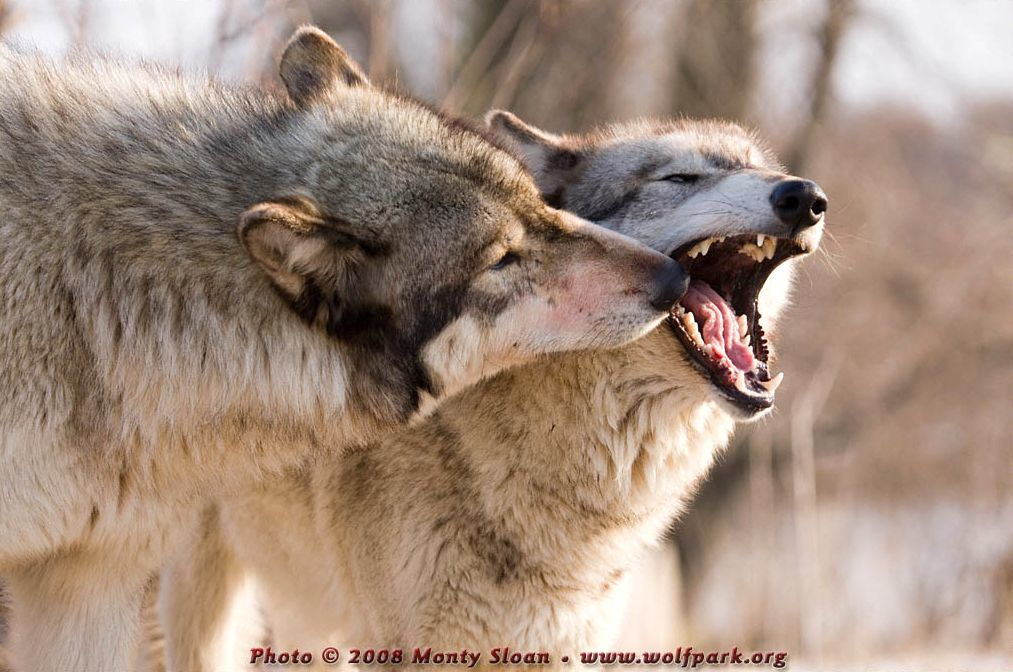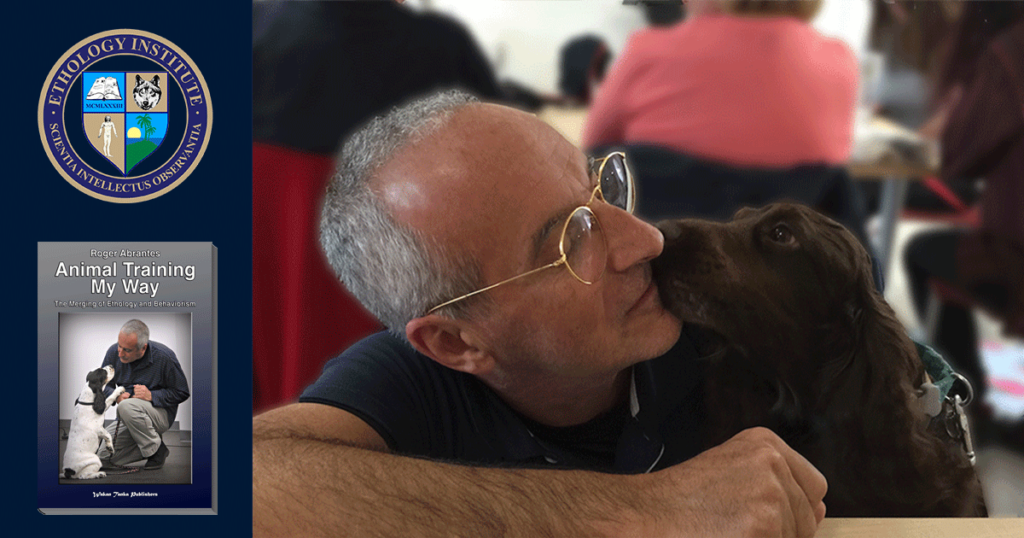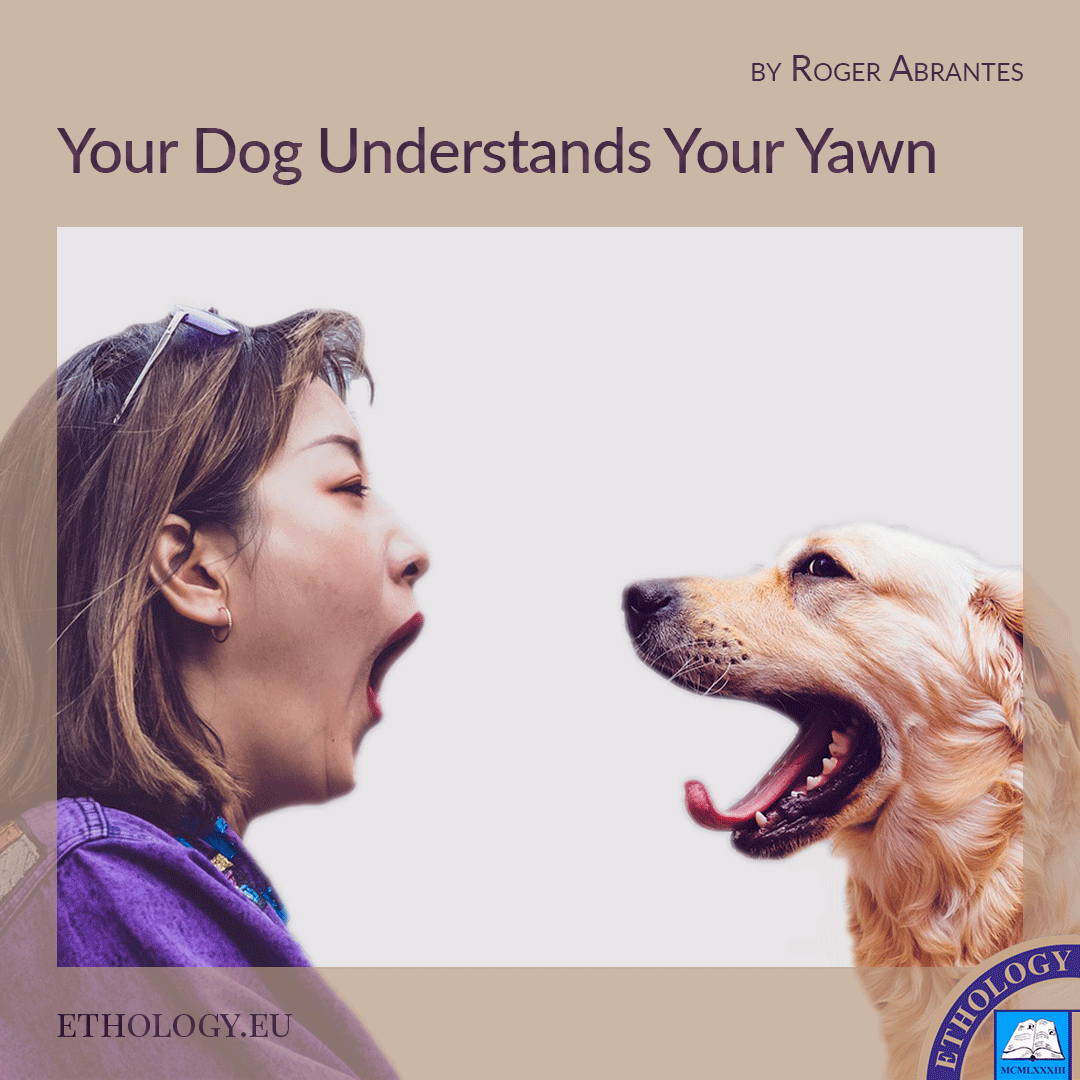Your dog understands your yawn. A yawn is a simple behavior, a reflex, with specific physiological functions. We are not the only ones yawning. Chimpanzees, bonobos, macaques, and dogs, among others, yawn. Although a simple behavior, yawning also performs social functions. It is contagious, not only within a group of individuals of the same species but also across species and with humans and dogs.
The original function of the yawn is not clear, several explanations being as probable. One study suggests that yawning brings an influx of oxygen to the blood when it has increased levels of carbon dioxide. Another explanation focuses on a particular necessity to stretch the muscles in the tongue and neck. A third interpretation suggests that yawning helps to keep alert, a crucial condition for any predator to succeed. Since social predators need one another to succeed, yawning developed into being contagious (through natural selection) because of the benefits it confers. Another suggestion is that yawning helps to control the temperature of the brain. Studies point out the connection between yawning and neurotransmitters, such as serotonin and dopamine, that affect various emotional states. That could explain the pacifying function of yawning.
The simplest explanation for yawning being contagious is that the mirror neurons in the frontal cortex of various vertebrates, including humans and dogs, activate the corresponding area in the brain of others. Studies have shown that this mirroring effect occurs not only within the same species but also across species. Mirror neurons may explain imitation and allelomimetic behavior.

Wolf yawning, a behavior shared by wolves and dogs and also common in other species (photo by Monty Sloan, Wolf Park, Indiana, USA).
Dogs yawn and studies have found that they are more prone to yawn when their owners yawn than when strangers do the same. These are serious studies conducted at the universities of Tokyo, Porto, and London’s Birkbeck College. They discarded the possibility of the dogs’ yawning being a stress response by monitoring their heart rates during the experiments.
The dog’s yawn is like ours. It often precedes the same characteristic sound. We associate yawning with tiredness or boredom. In reality, it can express embarrassment, insecurity, excitement, and relief. Some humans yawn when they are in love, which can be embarrassing if it is mistaken for boredom!
Dogs may yawn when tired, but the yawning functions usually as pacifying behavior (for themselves and opponent). As we see in many other cases, a behavior originates with a particular function and gains other beneficial functions later on. Yawning became a signal of friendship, of peaceful intentions. For example, a male dog may yawn if the female snarls at him during the mating ceremony. A self-confident dog yawns showing friendliness to an insecure opponent, and vice versa. Dogs yawn to us with the same functions and results. They may also yawn as a displacement activity. An owner scolding his dog is a typical situation where we can see a dog yawn. In critical training cases prone to error, as in the so-called ‘stay,’ the behavior of the owner causes the dog insecurity. A yawn is likely to follow, together with licking and muzzle-nudging. When the owner changes behavior, say, by using a friendlier tone or more relaxed body posture, the dog ceases to display those pacifying behaviors.
So, yes, your dog yawns at you to show it is friendly and peaceful—and you can safely yawn back confirming you are as well. Once again, don’t worry if people find it silly. Yawning, champing (chomping), licking your lips, squeezing your eyes shut, pouty mouth, the canine muzzle grasp work—and all communication means are valid as long as they promote understanding, wouldn’t you agree?
Featured image by Anton Antonsen.
Featured Course of the Week
Ethology Ethology studies animal behavior in its natural environment. It is one of the fundamental courses in your curriculum. A reliable knowledge of animal behavior is the basis to create a satisfying relationship with any animal we train.
Featured Price: € 168.00 € 98.00

Learn more in our course Ethology and Behaviorism. Based on Roger Abrantes’ book “Animal Training My Way—The Merging of Ethology and Behaviorism,” this online course explains and teaches you how to create a stable and balanced relationship with any animal. It analyses the way we interact with our animals, combines the best of ethology and behaviorism and comes up with an innovative, yet simple and efficient approach to animal training. A state-of-the-art online course in four lessons including videos, a beautiful flip-pages book, and quizzes.


1 thought on “Your Dog Understands Your Yawn”
Comments are closed.